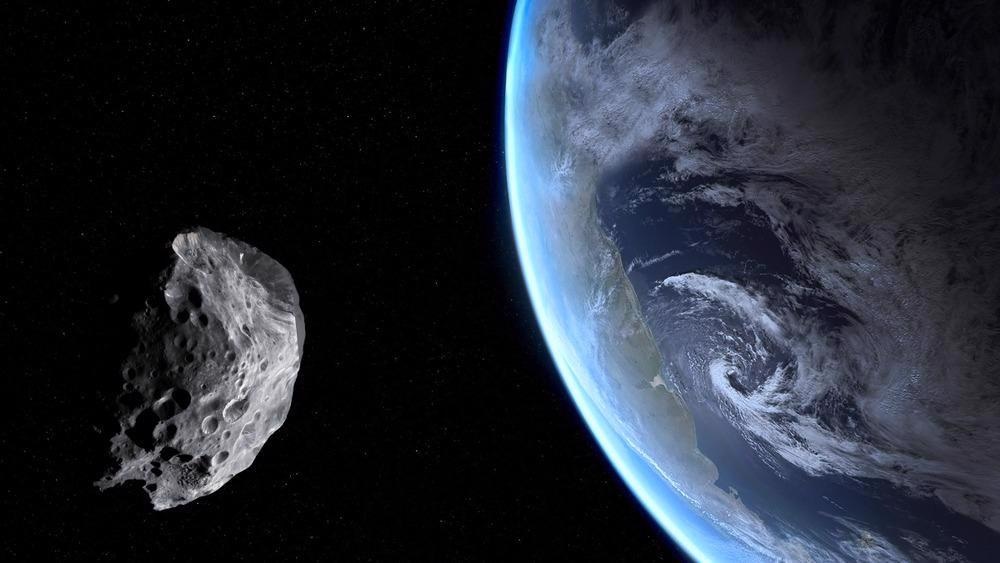AZoQuantum talks to Professor Gretchen Benedix of Curtin University about the asteroid 4660 Nereus, next due to pass by the Earth on 11th December 2021.
Could you please tell us a little about yourself and your background in cosmic mineralogy and astrogeology?
I have been interested in space since I was a little girl. My journey to studying rocks from space started with a physics degree but quickly culminated in a geology degree, so I apply the skills of an Earth scientist to rocks from planets and asteroids from our solar system.
A significantly-sized asteroid called Asteroid 4660 Nereus is due to pass us by on the 11th of December. How long have we known of this asteroid?
This asteroid was ‘discovered’ in 1982 during an observing program that was designed to search for Near-Earth Objects – asteroids that have orbital features that mean that can pass very near to the Earth.
This asteroid has an orbit around the sun of about 1.8 earth years but only comes close to earth roughly every 10 years. This is due to the different orbital paths each body takes.
How big is Nereus and how does this compare to other asteroids that regularly pass us by?
4660 Nereus is about 330 meters in diameter, which is common to rare for these Near-Earth Objects. There are a lot more that are smaller than this, but a lot fewer that are larger than this. This size distribution is based on a lot of things but is partly due to collisions in space that create smaller rocks from bigger ones.
How close to the Earth will Asteroid 4660 Nereus come? Is there any cause for concern?
There is no cause for concern. The closest approach will be 3.9 million km – this is about 10 times the distance between the Earth and the Moon. On the scale of the Solar System that is very close, but on the scale of humans, it’s very far away. NASA maintains a list of objects that are defined as potentially hazardous due to their predicted size and orbit. If the orbit comes closer to the Earth than 7million km, the object goes on the list.
In 2012 NASA predicted there could be as many as 4,700 asteroids that meet the requirements of being potentially hazardous to Earth—how significant is the risk of one of these asteroids impacting Earth?
This is a difficult question to answer. The risk is there, but the significance is highly dependent on the size, composition, and speed of any of these potentially hazardous bodies. For instance, if Nereus were to hit, there would be local significance, but not global significance, but if it was moving a bit faster or made entirely of Iron – that might change the effect. This may not answer the question entirely but hopefully explains the variations.

Image Credit: Dima Zel/Shutterstock.com
Is there any risk of this Asteroid 4660 Nereus impacting Earth in the future? What kind of damage would be caused?
Based on currently available models, it doesn’t appear that Nereus is a risk to Earth. However, based on the size and speed of the object, we can estimate that, if it did hit Earth, it could create a crater roughly 3km in diameter. This is a large crater that could cause seismic effects and an air blast. However, the likelihood is that it would hit the ocean and potentially cause some waves that would vary in height depending on the depth of the water.
Asteroid 4660 Nerus will pass us again in 2060 at a distance of 1.2 million kilometers; this is still a safe distance because it is still much farther than the Moon (roughly 3 Earth-Moon distances).
What does this asteroid offer the scientific community in terms of research and education?
Ever since its discovery, this asteroid has been interesting. Depending on where it is in its orbit, it has a very slow speed. Because of this, it is an attractive spacecraft target. In fact, Nereus was the original destination of the JAXA Hayabusa 1 mission, but because of launch delays, the target was later changed to the asteroid Itokawa. Nereus has a very interesting composition – it reflects quite a lot of the sunlight it receives and there are only a few meteorite types on Earth that are similar. Given its relative accessibility, it would be a fantastic body to visit to better understand its composition.
How likely is it that rumored rendezvous or mining missions will take place, and if so, when?
As described, it could definitely be a candidate for a space mission. As for a target for resources, this is more unlikely. There are estimates of this bodies worth, which are based on the reflected sunlight and some things we know about similar meteorite types we can study here on Earth, but mining an asteroid for precious minerals is a difficult task and I suspect it will be quite a long time before that can happen in a cost-effective way.
What technology exists for the monitoring of these Near-Earth Objects, and do measures exist to defend against them?
There are dedicated ground and space observation programs in place to discover and track as many Near-Earth Objects (NEO) as possible. The majority of these objects are too small to do global damage, but we have the technology to create these lists – this did not exist 30 years ago when I started looking at the NEO population. There were ~130 recorded objects. It was down to very dedicated astronomers painstakingly watching the sky every night, taking pictures, and then comparing them to see if anything has moved.
We are in a golden age of being able to apply automated techniques to fill out the NEO population. The NEO population has grown; there are now >27,000 objects defined this way.
Will Asteroid 4660 Nereus be visible to us as it passes by?
It will not be visible to the naked eye, but it could be visible with a telescope and a lot of patience. It will be visible from the Northern Hemisphere and the closest approach is on the 11th December, 2021.
Further Information:
Further Reading - Massive Black Holes: Where Do They Come From?
About Professor Gretchen Benedix
 Professor Gretchen Benedix is currently a Professor in the School of Earth and Planetary Sciences at Curtin University. She is also a member of the Space Science and Technology Centre, the largest group of Planetary Science Researchers in the Southern hemisphere. Professor Benedix's main areas of research have been the study of Meteorites from asteroids and mars, and more recently she has focused on the use of Machine Learning techniques to better understand the surface history of Mars. This is done by counting craters. Her team has created the largest database of craters on Mars at 94 million. Using this database, they have pinpointed the source crater of one group of meteorites we know comes from Mars. Professor Benedix has an asteroid named after her, 6579 Benedix; this asteroid is not a Near-Earth Object and will never impact the Earth.
Professor Gretchen Benedix is currently a Professor in the School of Earth and Planetary Sciences at Curtin University. She is also a member of the Space Science and Technology Centre, the largest group of Planetary Science Researchers in the Southern hemisphere. Professor Benedix's main areas of research have been the study of Meteorites from asteroids and mars, and more recently she has focused on the use of Machine Learning techniques to better understand the surface history of Mars. This is done by counting craters. Her team has created the largest database of craters on Mars at 94 million. Using this database, they have pinpointed the source crater of one group of meteorites we know comes from Mars. Professor Benedix has an asteroid named after her, 6579 Benedix; this asteroid is not a Near-Earth Object and will never impact the Earth.
Disclaimer: The views expressed here are those of the interviewee and do not necessarily represent the views of AZoM.com Limited (T/A) AZoNetwork, the owner and operator of this website. This disclaimer forms part of the Terms and Conditions of use of this website.